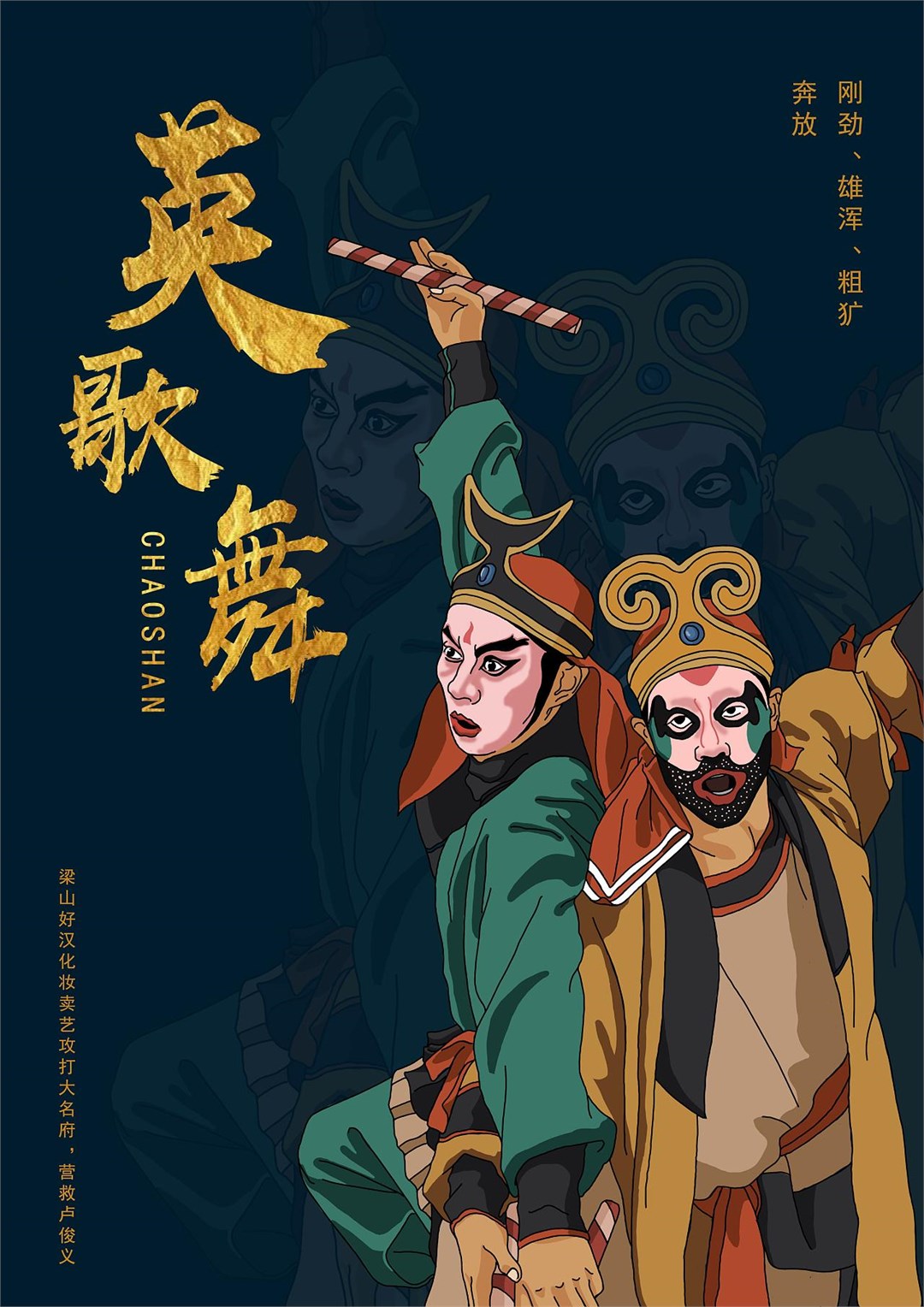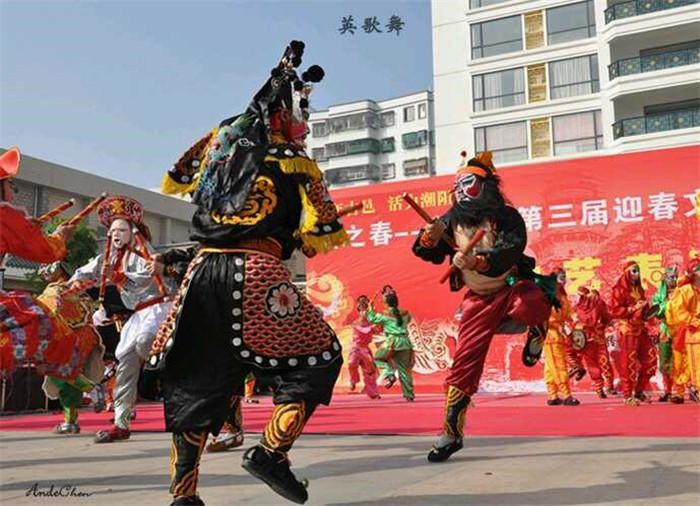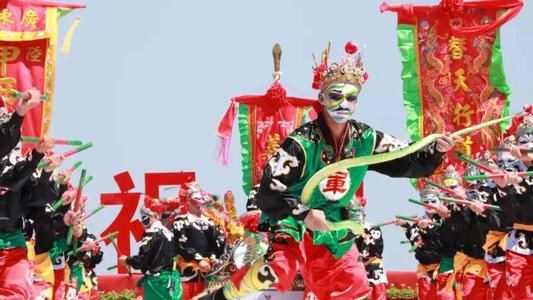Yingge Dance has been famous for over 300 years in the southeastern coast of China, particularly in the three counties of Chaoyang, Puning and Huilai of eastern Guangdong Province. During festivals and auspicious days, the household Dance is a must-have in the area. Athletic as it is, the performance integrates dance, opera and fighting moves of martial arts. Performers wearing Han Dynasty costumes and stage makeups beat the sticks held in their hands while changing the formations, showing an array of primitive masculinity in rich rhythm. The art is thought to originate from the locals’ exercise routines or some stories of the Outlaws of the Marsh – One is that the 108 Stars of Destiny in disguise fight to rescue Lu Junyi; the other is that they camouflage and try to save Song Jiang from being executed. The sticks, usually 40 to 67 centimeters long, are the essential dancing prop to generate a bright rhythm. The artists dance and roar vigorously while forming various patterns - signs, stars, linked coins, the moon and dragons. The smooth performance shows a flow of masculinity and power.
Society can benefit from the Dance because it reminds the public of traditional culture and its long-term survival and is entertaining and good for fitness. Moreover, it cultivates teamwork, enterprise and a sense of competitiveness. In 2015, it was included in the 6th batch of provincial intangible cultural heritage.



